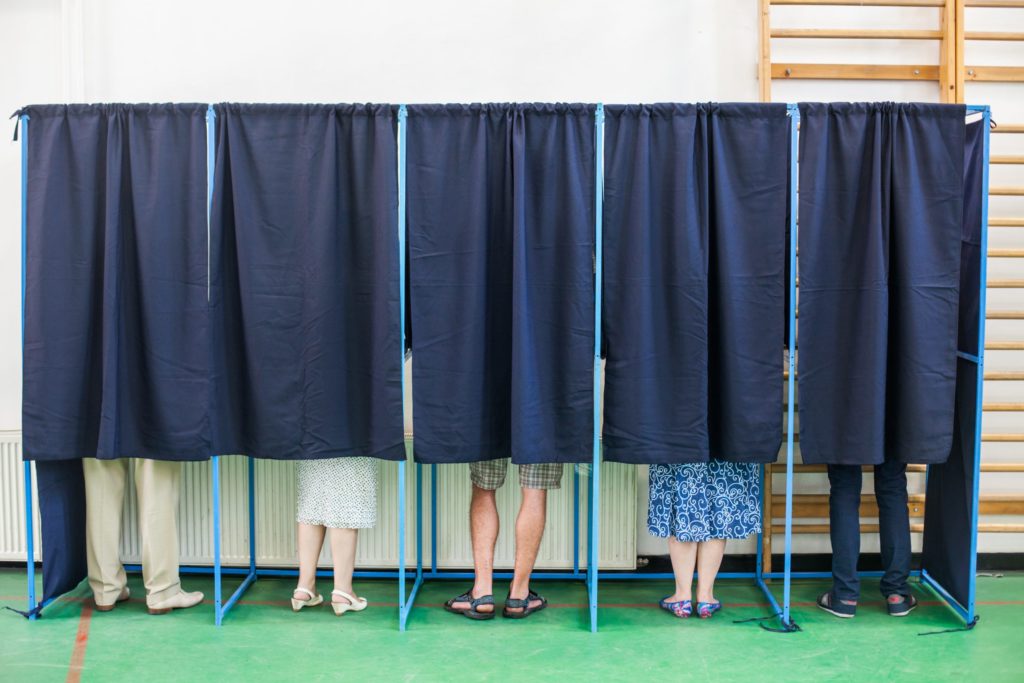Ohio’s outdated election system disenfranchises voters, fuels division
Come November, a barrage of TV ads, campaign mailers, and robocalls will urge Ohioans to head to the polls to determine the state’s elections. But in reality, most general election voters will have hardly a say.
Cook Political Report’s analysis shows that 12 out of Ohio’s 15 U.S. House seats are “safe.”
Likewise, polls for statewide offices suggest those contests are unlikely to be competitive. The result is that Tuesday’s primary election was the election of consequence, not the one happening on November 8—and few voters decided the outcome.
As just one egregious example, J.D. Vance won the GOP Senate nomination with fewer than 350,000 votes—in a state with more than 9 million age-eligible voters. Just 3.7% of the state’s voters have effectively elected him to be their next U.S. Senator.
Primary turnout in Ohio has averaged just 17.7% over the last decade, but even fewer voters are casting ballots that actually matter. Democratic voters who participated in their primary in safe red districts have little say in who is elected, and the same goes for Republican voters who participated in GOP primaries in safe blue districts. This “primary problem” exists across the nation: It’s so bad that just 10% of voters effectively elected 83% of Congress in 2020. In Ohio this year, 5.4% of voters effectively determined 80% of the state’s House contests (or 12 of 15 seats).
When few voters decide the vast majority of electoral outcomes, incentives for politicians change. Ohio GOP Senate candidates jockeyed for months for President Trump’s endorsement and did all they could to prove they were the most partisan Republican; the race followed Senator Rob Portman’s retirement announcement when he lamented, “[M]embers of both parties are being pushed further to the right and further to the left, and that means too few people who are actively looking to find common ground.”
In fact, today’s Congress is one of the most polarized in the past 50 years—despite the majority of Americans eschewing this divisiveness—and polarizing primaries have a significant impact on governing incentives. Research by the R Street Institute and Brookings Institution has found that the fear of being “primaried” pushes members to remain sensitive to special interest groups, to tailor their legislative agenda to primary voters, and dissuades them from bucking party leadership.
A more recent study found that one fourth of the rise of polarization in Congress over the last four decades is attributable to an increased threat of a primary challenger.
As Secretary of State Frank LaRose and Attorney General Dave Yost have noted, scrapping primaries altogether could solve a headache in figuring out how to elect state legislators in the absence of district boundaries.
While this may seem novel, Louisiana has done it for nearly 50 years. All candidates of an office, regardless of partisan affiliation, appear on the general election ballot, and if no one earns 50% support, a runoff is held with the top two candidates.
Another system cited by LaRose and Yost is ranked-choice voting.
Voters rank their candidates in order of preference, and the election functions like an instant runoff: the candidate who receives the least first-place votes is eliminated, and the second-place votes on those ballots are reallocated to the remaining candidates as first-place votes.
This would save taxpayer dollars and ensure more voters have a say. As a result, it’s possible that far fewer fringe candidates would get the nod.
Ohio policymakers should also watch Alaska.
That state will hold a single nonpartisan primary next month for the first time, and send four candidates to a ranked choice general election.
Ohio—like the rest of the nation—must reform its outdated primary system. Our Republic depends on an engaged electorate, but too often, our primaries disenfranchise voters, distort representation, and fuel division.








